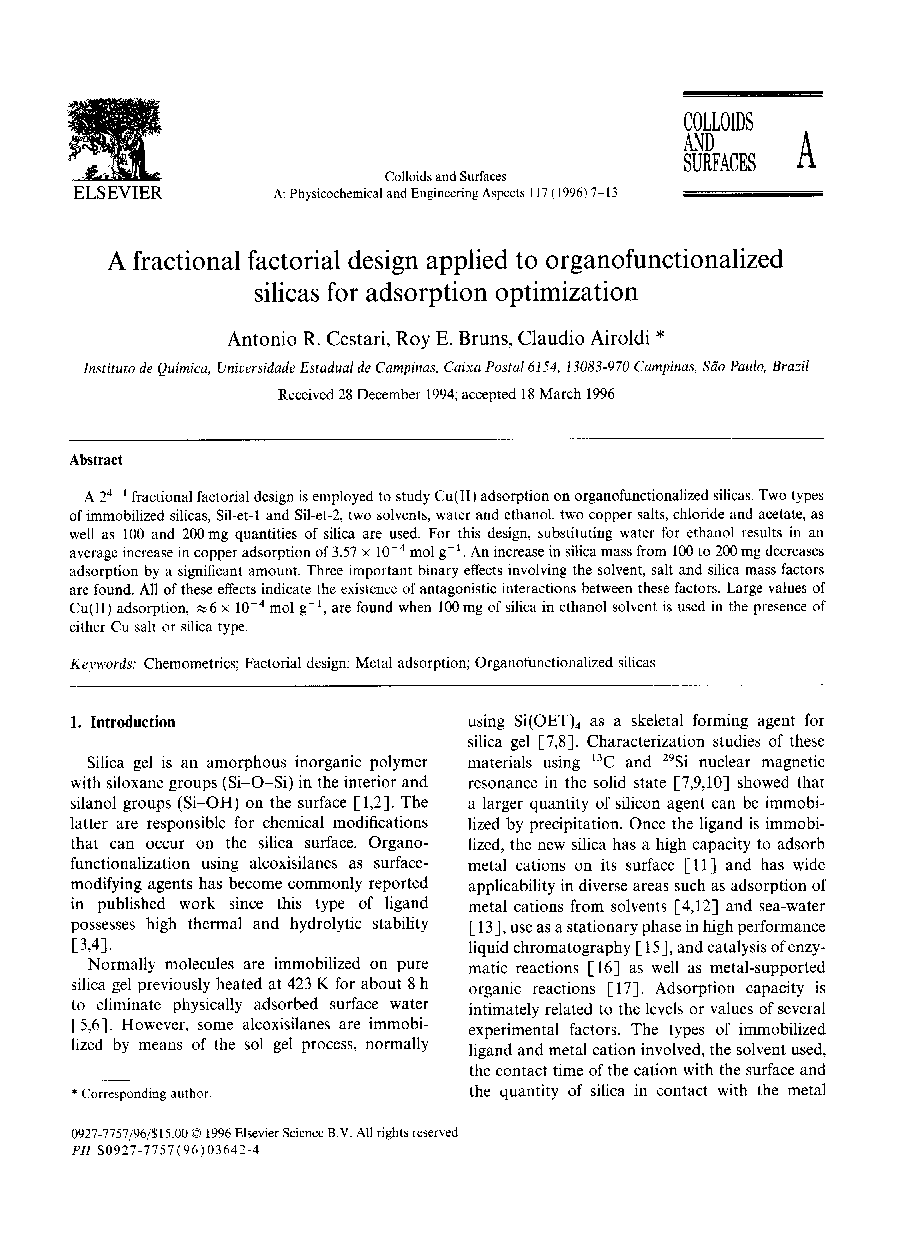| Article ID | Journal | Published Year | Pages | File Type |
|---|---|---|---|---|
| 11482873 | Colloids and Surfaces A: Physicochemical and Engineering Aspects | 2017 | 7 Pages |
Abstract
A 24â1 fractional factorial design is employed to study Cu(II) adsorption on organofunctionalized silicas. Two types of immobilized silicas, Sil-et-1 and Sil-et-2, two solvents, water and ethanol, two copper salts, chloride and acetate, as well as 100 and 200 mg quantities of silica are used. For this design, substituting water for ethanol results in an average increase in copper adsorption of 3.57 Ã 10â4 mol gâ1. An increase in silica mass from 100 to 200 mg decreases adsorption by a significant amount. Three important binary effects involving the solvent, salt and silica mass factors are found. All of these effects indicate the existence of antagonistic interactions between these factors. Large values of Cu(II) adsorption, â6 Ã 10â4 mol gâ1, are found when 100 mg of silica in ethanol solvent is used in the presence of either Cu salt or silica type.
Related Topics
Physical Sciences and Engineering
Chemical Engineering
Colloid and Surface Chemistry
Authors
Antonio R. Cestari, Roy E. Bruns, Claudio Airoldi,
